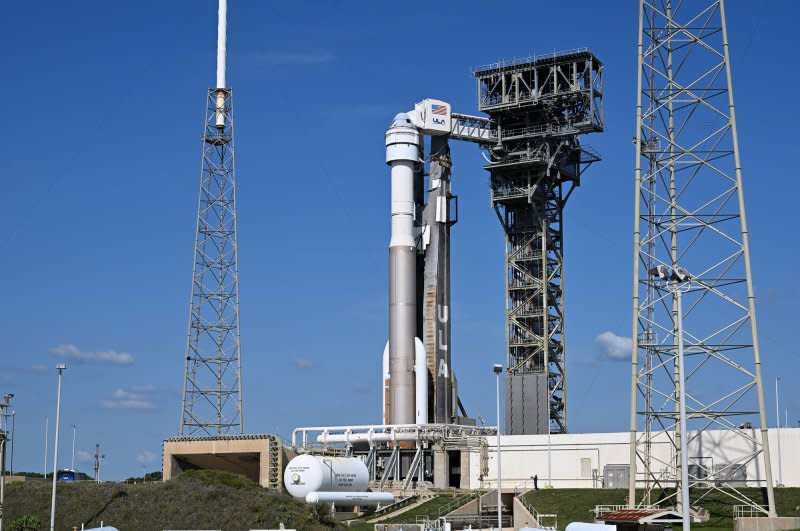Launch countdown continues for Saturday's crewed test of Boeing Starliner

- Oops!Something went wrong.Please try again later.
- Oops!Something went wrong.Please try again later.
May 31 (UPI) -- A day before what could be a historic launch of Boeing's Starliner capsule, space industry officials on Friday said the mission is progressing and "in good shape to fly."
NASA, Boeing and United Launch Alliance officials hosted a press conference on Friday ahead of the second attempted launch of Boeing's first crewed test of its Starliner spacecraft.
The United Launch Alliance Atlas V rocket carrying the Starliner spacecraft is preparing to launch at 12:25 p.m. EDT Saturday from Cape Canaveral Space Force Station in Florida.
The spacecraft will carry NASA astronauts Barry "Butch" Wilmore and Sunita "Suni" Williams to the International Space Station.
Participating in Friday's briefing were NASA Associate Administrator Jim Free, NASA Commercial Crew Program Manager Steve Stich, International Space Station Program Manager Dana Weigel, Boeing Vice President and Commercial Crew Program Manager Mark Nappi, ULA Vice President of Government and Commercial Programs Gary Wentz and Launch Weather Officer Mark Burger with the 45th Weather Squadron at Cape Canaveral Space Force Station.

Also at Friday's briefing was NASA astronaut Mike Fincke, who will pilot Starliner 1, the first rotational flight for Boeing pending certification for Starliner.
This is the second attempted launch of the Boeing Crew Flight Test after NASA scrapped a planned May 6 launch to fix a persistent helium leak in the Starliner's service module.
Stich said NASA saw a leak rate as high as 80 psi per minute, but the mission has a margin of about 500 psi.
Nappi said the spacecraft has about 50 pounds of helium stored in two tanks on board, and the leak would lose about a half-pound per day if it were left open.
"There's plenty of margin left over," Nappi said, adding, "We're in good shape to fly."
Fincke said the flight crew has been training at Boeing's facilities in Houston to respond to any possible launch failures.
"We're not expecting them, but in case they happen, our flight procedures and the crew will be able to safely come home and de-orbit," Fincke said.
While the helium leak has been a key focus point in the weeks leading up to launch, Stich on Friday ran down other possible issues NASA is considering and how other space flight contractors are sharing data to solve these problems.
Stich said SpaceX provided NASA with data from its Dragon booster indicating there was some degradation in the return signal from one of the reflectors on the docking module on the ISS.
NASA turned the data over to Boeing, which ran its own tests to determine whether Starliner could dock successfully with the reflector issue.
"Kudos to SpaceX for sharing data with us," Stich said. "One of the things I'm starting to see now amongst all of these entities that are flying in space is a sharing of data back and forth, which has been incredible."
The ISS, meanwhile, also has a pump failure on its urine processor assembly, which is the first stage in a process that converts astronauts' urine into drinkable water.
Weigel said, with the processor failed, the ISS will have to store urine on board the space station until a Northrop Grumman cargo flight can deliver a spare pump in August.
"Obviously, adding two more crew members to that further constrains the storage capability that we have on board," Weigel said.
Teams at Boeing and the ISS, however, worked a quick manifest change to be able to send a spare up to the ISS on board the Starliner, Weigel said.
Once Starliner safely docks at the ISS as planned on Sunday, Wilmore and Williams will remain onboard for about a week to test the Starliner and its subsystems before NASA completes certification of the spacecraft for rotational flights.
Burger predicted 90% favorable weather for Saturday's launch. Backup launch windows are available June 2, 5 and 6.

